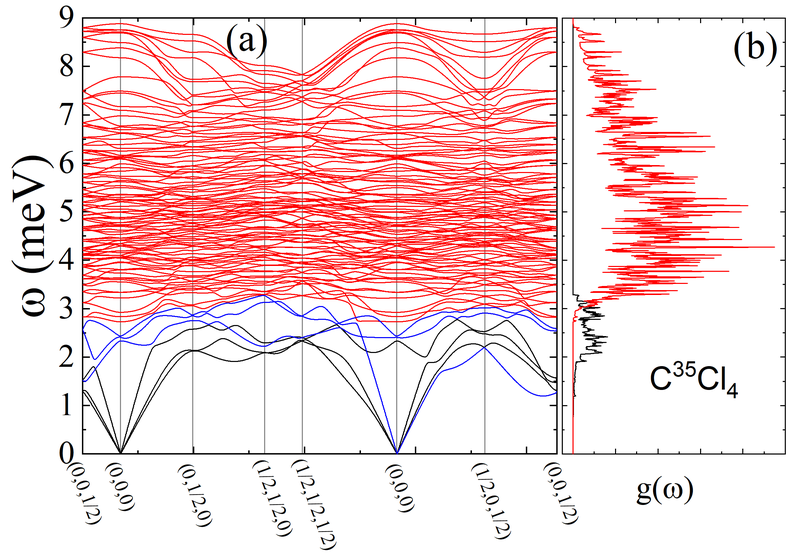Jonathan Fernando Gebbia defends his thesis on the study of the low-temperature anomalies of glasses existing in molecular crystals
Oct 19, 2021
Jonathan Fernando Gebbia defended his thesis co-directed by Josep Lluís Tamarit and Michela Romanini on October 6th at the Besòs campus (EEBE). Titled "Emerging glassy properties in molecular crystals", the thesis presents the study of low temperature anomalies of glasses found in different molecular crystals by means of low temperature calorimetry, inelastic neutron scattering, and simulations based on ab-initio DFT
One of the most complex and unsolved problems in physics is the glass transition problem, in which the resulting state, the glass, exhibits unique and anomalous properties. During the transition, a kinetic freezing phenomenon occurs, in which a state of equilibrium of a many-body disordered system transforms into a non-equilibrium state, with similar mechanical properties to a crystalline solid. The case of the structural glass represents the paradigm of these systems. This state is achieved when a molecular or atomic liquid is supercooled below the crystallization temperature and to temperatures so low that, the viscosity and characteristic relaxation times diverge (a similar divergence can be reached also by over-pressurizing the liquid). However, liquids are not the only systems to produce glassy states. In fact, any disordered system that exhibits some internal dynamics can in principle be supercooled to a non-ergodic state with “frozen" disorder. The resulting phase is considered as a glassy-like state, by its very non-ergodic nature. All these systems exhibit a set of anomalous features compared to those of crystalline solids. These anomalies, up to now universal to glasses, include the well-known boson peak, visible in the low-temperature specific heat (and also in low-energy vibrational density of states), a linear temperature dependence below 1 - 2 K in the specific heat, and a drastic drop of the thermal conductivity below 100 K with respect to their crystalline counterpart. In spite of the attempts of the last 50 years to find a universal explanation for these anomalous glassy features, their fundamental origin is still a matter of debate.
In this thesis we have focused on the study of these anomalies in molecular glasses obtained from translationally ordered and orientationally disordered phases, in which the dynamics of molecular reorientations can be frozen under certain conditions, for example, by fast cooling. The resulting glassy state is, then, an orientational glass. The orientationally disordered systems presented in this work are actually crystalline phases of rigid molecules. The corresponding lattice symmetries impose restrictions to molecular orientations which determine a statistical and controlled disorder in the system. These cases have been chosen due to the high reduction of complexity of the resulting glass compared to structural glasses, due to the existence of translational order. We propose that the study of these peculiar systems with restricted disorder can shed light onto the origin of low-temperature specific heat anomalies (and low-energy density of states anomalies) and on the relevance of the disorder on these physical magnitudes.
The materials chosen for this study are mainly insulating molecular systems such as: the halomethane family CBrnCl4-n with n = 0, 1, 2, two adamantine derivatives, 2-adamantanone and 1-fuoro-adamantane, and three solids formed by planar molecules, thiophene (pristine and deuterated), parachloronitrobenzene, and pentachloronitrobenzene.
A common conclusion could be drawn for all these systems: the presence of low-energy optical excitations in which rigid molecules exhibit rotational-translational motions coupled to propagating acoustic waves. This phenomenon induces an excess of vibrational states that gives rise to the boson peak, regardless of the ordered or disordered nature of the phase studied. Furthermore, we discuss the anharmonicity of these vibrational modes and their influence on the boson peak and the anomaly visible below 1 - 2 K in the specific heat.

Share: